Last updated on September 22, 2023
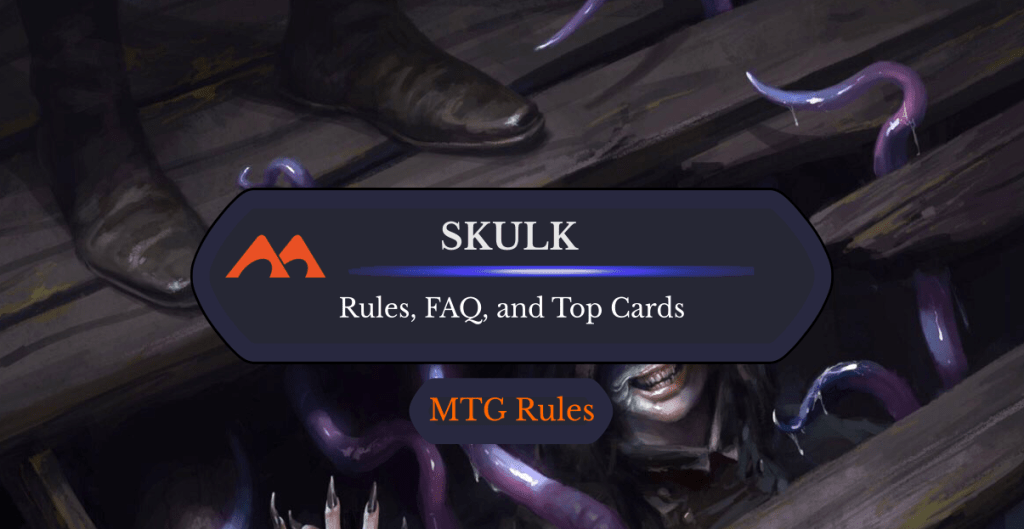
Wharf Infiltrator | Illustration by Daarken
Maybe one of the biggest barriers for newer Magic players is the game’s many keyword abilities. These are static abilities that are common enough among creatures in a given set or across the game’s history that several lines of rules text are replaced by a single word like trample or deathtouch. While experienced players likely remember what most of these abilities do, newer players may see a term that isn’t as popular as it once was and question what it does. This is definitely the case with one of the more obscure keyword abilities: skulk.
Skulk was an attempt by Wizards to create an evasion ability that couldn’t become too powerful by buffing up a single creature. This sets it apart from other evasion abilities like fear and horsemanship, which can often be used in Voltron decks as a way to sneak a massive creature past any blockers. But similar to other evasion abilities, skulk never became popular enough to be considered an evergreen keyword like first strike or haste.
Let’s take a look at how this mechanic works, what some of the best cards are, and discuss why skulk may not have gotten as much love as other keyword abilities. Ready? Let’s get to it!
How Does Skulk Work?
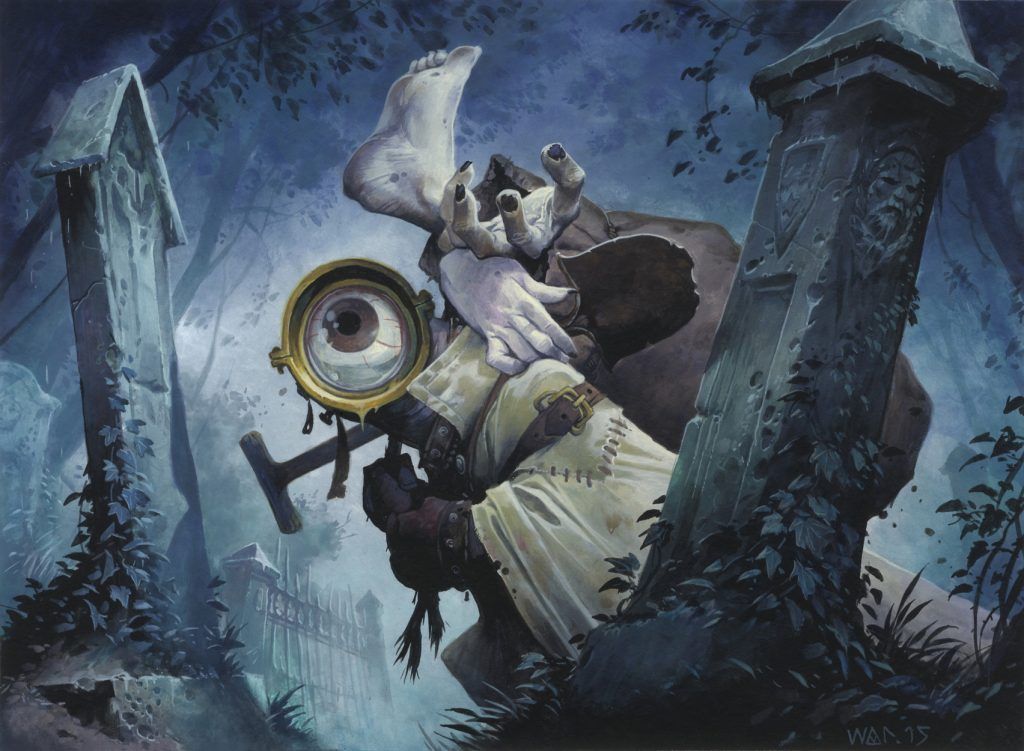
Furtive Homunculus | Illustration by Wayne Reynolds
A creature that has skulk can’t be blocked unless the blocker has a higher power. The ability is most often found on weaker creatures, which get the most use out of it. While skulk won’t allow you to buff your creatures with equipment or auras and keep them unblockable, you can still use combat tricks between the declare blockers and combat step in order to sneak some extra damage through.
Skulk can also be useful if the creature also has some triggered ability when dealing combat damage. This means that you get extra value out of swinging with it as opposed to just doing a small bit of damage. Skulk creatures can be good targets of auras like Curiosity since it adds a combat damage trigger without buffing the creature and ruining its evasion.
The History of Skulk in MTG
Skulk first appeared in Shadows over Innistrad back in 2016. The ability was mostly found on spirit creatures, but a couple cards proved that the mechanic could also be found on other types (i.e., Rancid Rats and Furtive Homunculus). The mechanic’s flavor suggests that skulk creatures often sneak past bigger threats, going unnoticed by their more powerful enemies.
While several more creatures with skulk were printed in Eldritch Moon, the mechanic was never widely printed. Even in these first two sets there weren’t too many creatures with the ability, and the only creature to be given skulk since was Glenn, the Voice of Calm from the Walking Dead Secret Lair drop. Other newer printings of skulk creatures in Commander products are just reprints of creatures that were originally printed in Shadows over Innistrad or Eldritch Moon.
While other creatures with “skulk” or “skulker” in their name exist, these don’t reflect what the actual keyword mechanic does. Several creatures named this way from before skulk’s release as a keyword share a completely different theme, as seen on Skulking Fugitive and Skulking Knight. Some creatures might play into the evasion aspect but don’t follow all the same rules as the keyword, like Ashiok's Skulker.
Skulk isn’t an evergreen keyword. Only 11 creatures exist with the ability on them, and there are another three cards that can give creatures skulk: Skeleton Key, Behind the Scenes, and Odric, Lunarch Marshal.
Mark Rosewater initially hoped the mechanic could have become an evergreen one, but he mentioned on his blog that it turned out to be more difficult to work with than he anticipated. He also specified that the mechanic may come back in future sets. As of now, the most recent printing was as a sticker ability in the Unfinity set.
Does Skulk Stack?
Skulk does not stack. This means if you control both Behind the Scenes and a creature that already has skulk, it doesn’t add any extra effects or benefits to that creature.
Gallery and List of Skulk Cards
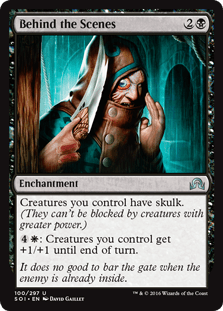
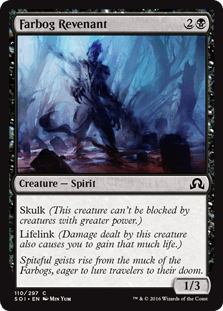
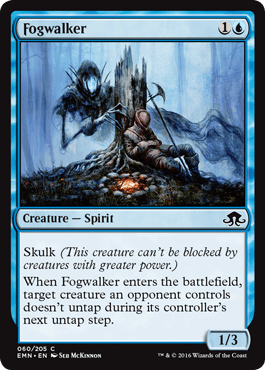
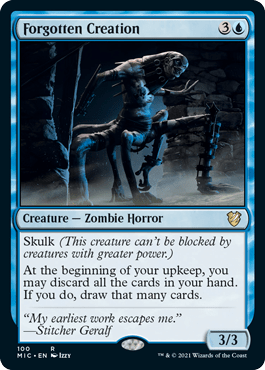
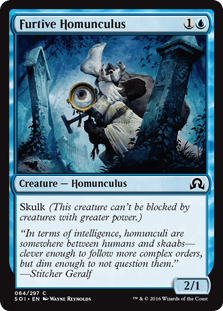
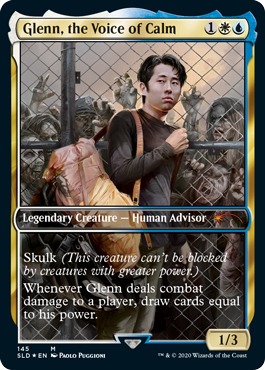
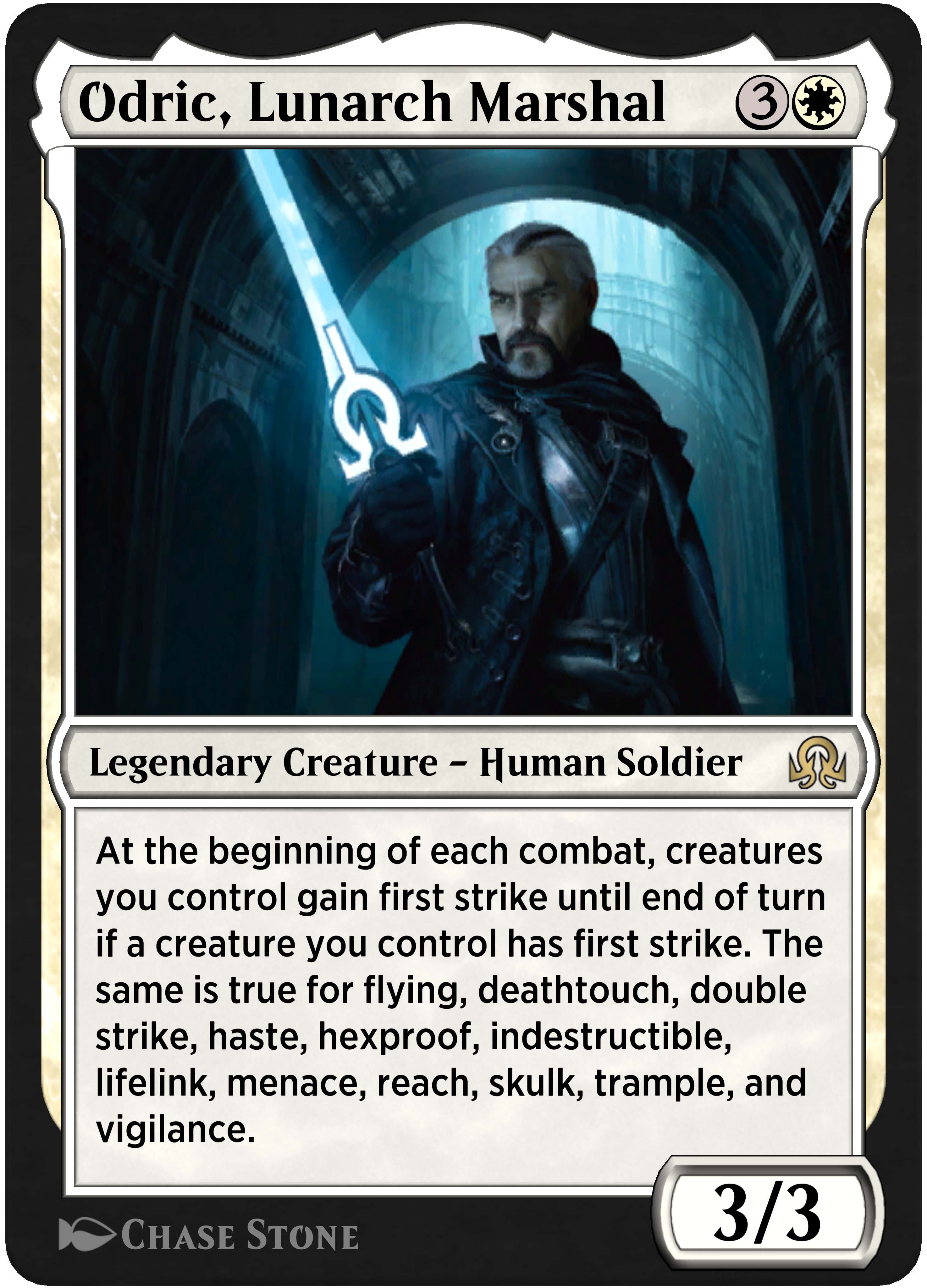
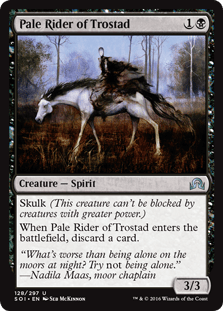

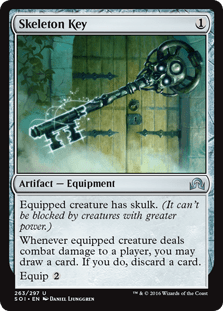
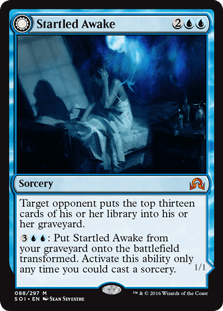
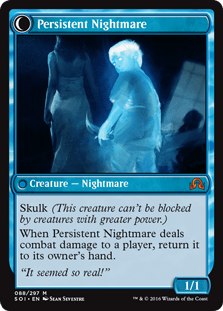
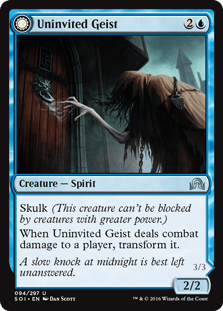

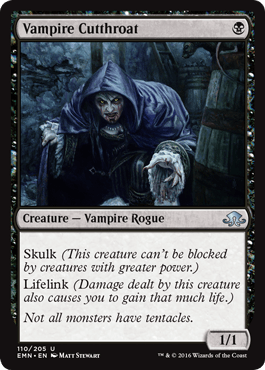
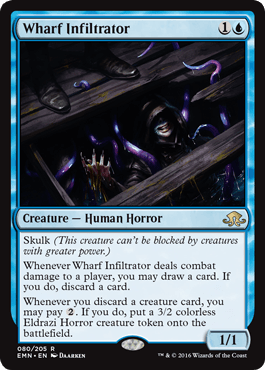
- Behind the Scenes
- Farbog Revenant
- Fogwalker
- Forgotten Creation
- Furtive Homunculus
- Glenn, the Voice of Calm
- Odric, Lunarch Marshal
- Pale Rider of Trostad
- Rancid Rats
- Skeleton Key
- Startled Awake / Persistent Nightmare
- Uninvited Geist / Unimpeded Trespasser
- Vampire Cutthroat
- Wharf Infiltrator
Best Skulk Cards

Odric, Lunarch Marshal is a middlingly popular commander. It’s also good to have in any deck that runs a lot of keywords, basically turning it into a pseudo-sliver deck. While Odric doesn’t have the skulk ability, it is one of the abilities it’s able to dole out.


Uninvited Geist is one of a few skulk cards that actually fit well into a Voltron deck. You can start buffing it up without ruining its evasion once it does damage and turns into Unimpeded Trespasser.
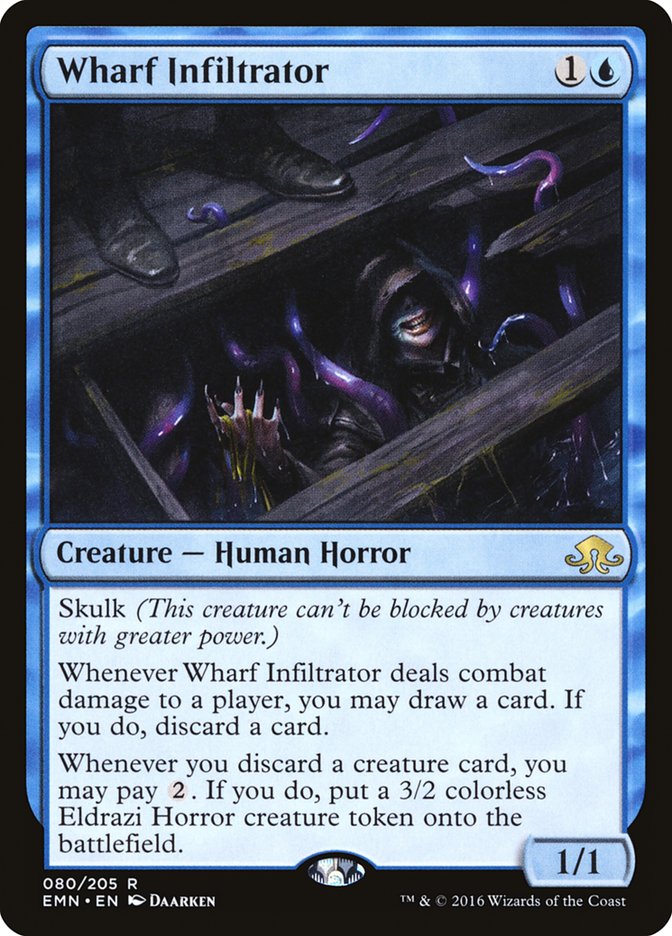
Wharf Infiltrator was recently reprinted in the Mind Flayarrrs Commander precon, and it’s a good fit for any deck helmed by Captain N’ghathrod. Forgotten Creation was also reprinted in this deck and can be a good tool for lots of Commander decks. It allows you to fill your graveyard and refill your hand, which can be useful in a variety of strategies. I recently added one to my Queza, Augur of Agonies deck, where it helps me deal a significant amount of damage.

Glenn, the Voice of Calm didn’t make as big of a splash as some of the other Walking Dead cards, but it’s still one of the more useful skulk creatures. Its combat damage trigger is a great source of card draw, and it fits into a pretty strong established tribe in Magic since it’s a human.
Decklist: Odric in Commander
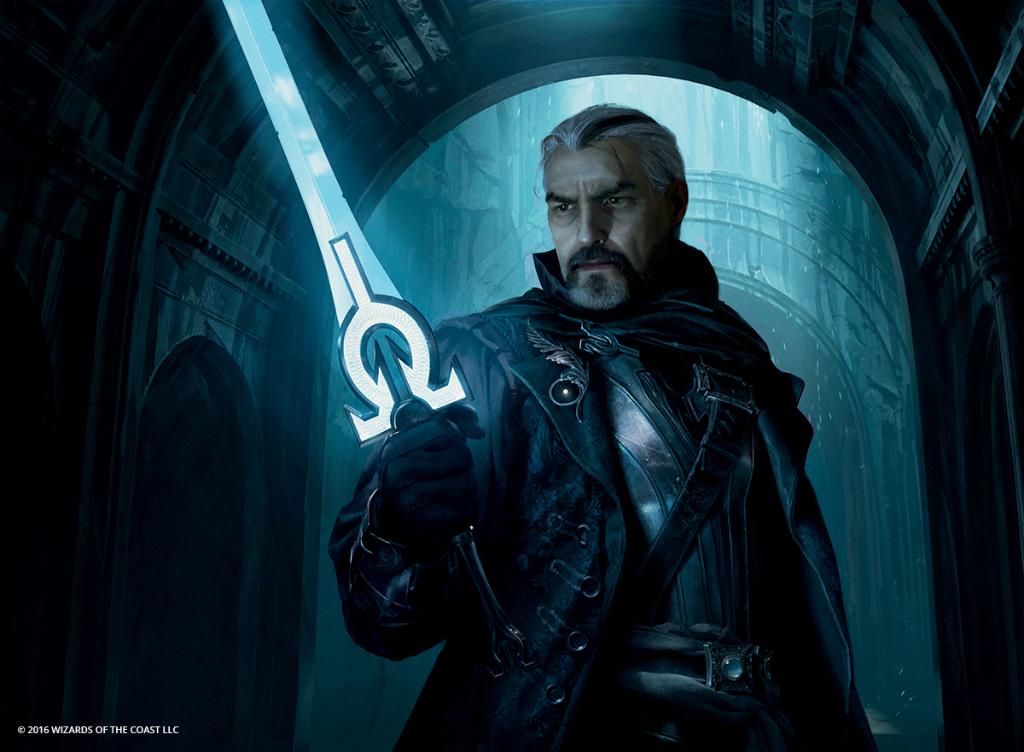
Odric, Lunarch Marshal | Illustration by Chase Stone
Commander (1)
Planeswalkers (4)
Gideon Blackblade
Ajani Steadfast
Basri Ket
Elspeth Resplendent
Creatures (35)
Zetalpa, Primal Dawn
Thalia, Heretic Cathar
Serra Ascendant
Selfless Savior
Segovian Angel
Oketra the True
Mother of Runes
Mangara, the Diplomat
Lone Rider
Healer's Hawk
God-Eternal Oketra
Gisela, the Broken Blade
Fencing Ace
Darksteel Myr
Crystalline Giant
Bastion Protector
Baneslayer Angel
Avacyn, Angel of Hope
Angelic Overseer
Aerial Responder
Aegis Angel
Triplicate Titan
Solitude
Fey Steed
Ambitious Farmhand
Chaplain of Alms
Welcoming Vampire
Loyal Warhound
Sunblade Samurai
Militia Bugler
Skyclave Apparition
Deep Gnome Terramancer
Danitha, Benalia's Hope
Akroma, Angel of Wrath
Felidar Sovereign
Instants (5)
Akroma's Will
Unbreakable Formation
Swords to Plowshares
Path to Exile
Teferi's Protection
Sorceries (8)
Wrath of God
Ondu Inversion
Mass Calcify
Gift of Estates
Emeria's Call
Austere Command
Environmental Sciences
Lay Down Arms
Enchantments (4)
Legion's Landing
Darksteel Mutation
The Restoration of Eiganjo
Felidar Retreat
Artifacts (10)
Sol Ring
Pearl Medallion
Oketra's Monument
Maul of the Skyclaves
Mask of Avacyn
Basilisk Collar
Moonsilver Key
Lightning Greaves
Skeleton Key
Grafted Exoskeleton
Lands (33)
Temple of the False God
Nykthos, Shrine to Nyx
Idyllic Grange
Emeria, the Sky Ruin
Plains x26
Kor Haven
Cave of the Frost Dragon
Witch's Clinic
Unfortunately skulk isn’t really a good enough mechanic to fully build a deck around. That said, this Odric, Lunarch Marshal Commander deck may be one of your best shots at getting a board full of skulk creatures.
By equipping one of your creatures with Skeleton Key, you can give all of them skulk. While this might not have a huge impact on the game it can be helpful to get some more attackers through your opponent’s blockers.
The rest of the deck is built around granting other powerful keywords to your creatures. I also included several board wipes so that you can clear out your opponent’s creatures since there are a lot of ways to make your creatures indestructible.
Wrap Up
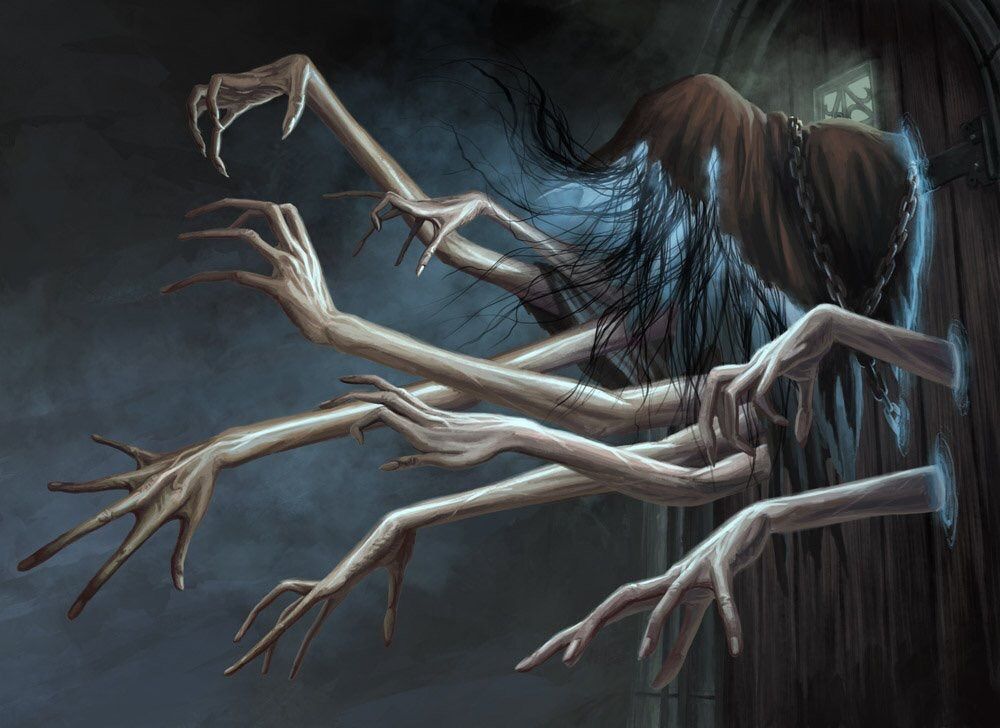
Unimpeded Trespasser | Illustration by Dan Scott
Skulk isn’t the strongest evasion mechanic out there. It doesn’t allow you the chance to deal a lot of damage all at once, unlike most evasion mechanics. It also doesn’t have as niche of requirements for blocking like obscure evasion effects like horsemanship.
While skulk certainly has potential as a way to trigger combat damage abilities, not enough skulk creatures currently have those abilities themselves. But it could be a mechanic to look out for in future sets if more creatures are added and there are some good synergies with combat damage payoffs.
Do you use any skulk creatures? Would you be interested in seeing the mechanic return in future sets? What planes other than Innistrad might be housing creatures with skulk? Let me know in the comments below or on Draftsim’s Twitter.
Thanks for reading, and I look forward to seeing you in the next one!
Follow Draftsim for awesome articles and set updates:

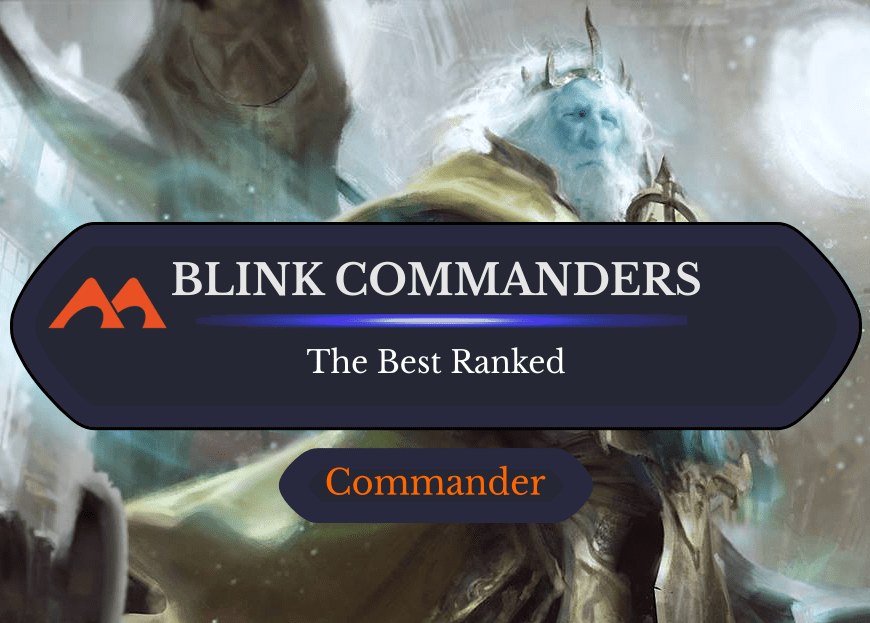
Add Comment